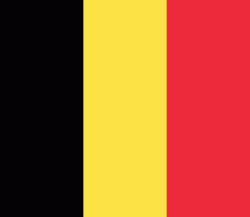Sint-Jans-Molenbeek
Molenbeek-Saint-Jean (French, ) or Sint-Jans-Molenbeek (Dutch, ), often simply called Molenbeek, is one of the 19 municipalities of the Brussels-Capital Region, Belgium. Located in the western part of the region, it is bordered by the City of Brussels, from which it is separated by the Brussels–Charleroi Canal, as well as by the municipalities of Anderlecht, Berchem-Sainte-Agathe, Dilbeek, Jette, and Koekelberg. The Molenbeek brook, from which it takes its name, flows through the municipality. In common with all of Brussels' municipalities, it is legally bilingual (French–Dutch).
From its origins in the Middle Ages until the 18th century, Molenbeek was a rural village on the edge of Brussels, but around the turn of the 19th century, it experienced major growth brought on by a boom in commerce and manufacturing during the Industrial Revolution. Its prosperity declined after the Second World War, owing to deindustrialisation, leading to extensive investment and regeneration. Knowing a strong movement of immigration, mainly Moroccan, from the 1950s and 1960s, Molenbeek became increasingly multicultural with a minority Muslim population. In the early 21st century, it gained international attention as the base of Islamist terrorists who carried out attacks in both Paris and Brussels. Nowadays, it is a mostly residential municipality consisting of several historically and architecturally distinct districts.
, the municipality had a population of 97,697 inhabitants. The total area is 5.89 km2, which gives a population density of 16268 PD/km2, twice the average of Brussels. Its upper area is greener and less densely populated.
From its origins in the Middle Ages until the 18th century, Molenbeek was a rural village on the edge of Brussels, but around the turn of the 19th century, it experienced major growth brought on by a boom in commerce and manufacturing during the Industrial Revolution. Its prosperity declined after the Second World War, owing to deindustrialisation, leading to extensive investment and regeneration. Knowing a strong movement of immigration, mainly Moroccan, from the 1950s and 1960s, Molenbeek became increasingly multicultural with a minority Muslim population. In the early 21st century, it gained international attention as the base of Islamist terrorists who carried out attacks in both Paris and Brussels. Nowadays, it is a mostly residential municipality consisting of several historically and architecturally distinct districts.
, the municipality had a population of 97,697 inhabitants. The total area is 5.89 km2, which gives a population density of 16268 PD/km2, twice the average of Brussels. Its upper area is greener and less densely populated.
Map - Sint-Jans-Molenbeek
Map
Country - Belgium
 |
 |
| Flag of Belgium | |
Belgium is a sovereign state and a federal constitutional monarchy with a parliamentary system. Its institutional organization is complex and is structured on both regional and linguistic grounds. It is divided into three highly autonomous regions: the Flemish Region (Flanders) in the north, the Walloon Region (Wallonia) in the south, and the Brussels-Capital Region. Brussels is the smallest and most densely populated region, as well as the richest region in terms of GDP per capita. Belgium is also home to two main linguistic communities: the Flemish Community, which constitutes about 60 percent of the population, and the French Community, which constitutes about 40 percent of the population. A small German-speaking Community, numbering around one percent, exists in the East Cantons. The Brussels-Capital Region is officially bilingual in French and Dutch, although French is the dominant language.
Currency / Language
| ISO | Currency | Symbol | Significant figures |
|---|---|---|---|
| EUR | Euro | € | 2 |
| ISO | Language |
|---|---|
| NL | Dutch language |
| FR | French language |
| DE | German language |















